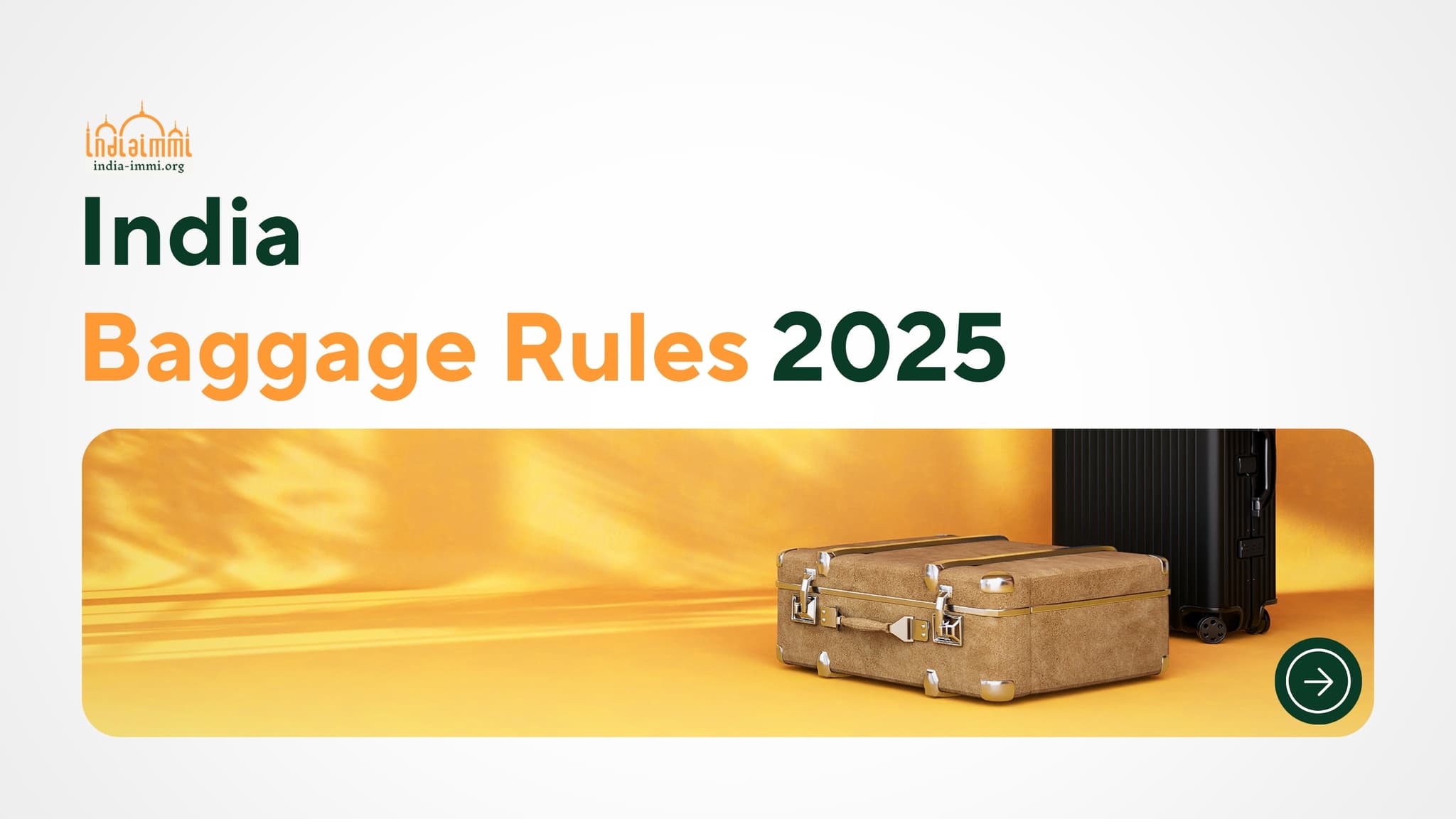India welcomes millions of international travellers each year. To ensure smooth entry and to avoid unnecessary complications, visitors must comply with baggage regulations set by the Central Board of Indirect Taxes and Customs (CBIC). While the rules are applied nationwide, in practice certain procedures may differ slightly across airports.
General Principles for Baggage Entry
| Category | Allowance / Rule | Notes |
|---|---|---|
| Duty-Free Allowances |
|
Personal effects not counted within the duty-free limit |
| Gold & Jewellery |
|
Exceeding limits (bars, coins, bullion) requires declaration & duty (10–12.5%) |
| Currency |
|
Declaration required at Red Channel |
| Prohibited Items | Narcotics, firearms, ammunition, ivory, wildlife products, counterfeit currency, illegal publications, obscene materials | Absolute ban |
| Restricted Items | Excess gold/precious stones, satellite equipment, drones, bulk medicines, plants & seeds, fresh produce, antiques, religious statues without ASI clearance | Require declaration/permit |
Customs Clearance Procedure
|
|
🟢 Green Channel: passengers with no dutiable or prohibited goods 🔴 Red Channel: passengers carrying dutiable goods, high-value currency, significant quantities of medicines, or restricted items |
|
|
|
|
|
|
📌 Tip: When in doubt, choose the Red Channel to avoid penalties.
Duty-Free Limits Based on Length of Stay
|
More than 3 days abroad |
exemption up to ₹25,000 for passengers aged 10 and above |
|
Up to 3 days abroad |
exemption up to ₹12,000 |
|
Children under 10 years |
lower exemption, ranging from ₹3,000–₹6,000 depending on stay duration |
Rules by Nationality and Mode of Entry
|
International visitors (except Nepal, Bhutan, Myanmar) |
Citizens of Nepal, Bhutan, Myanmar |
Returning Indians |
|
Duty-free allowance up to ₹50,000 |
|
|
Variations Across Airports
-
Delhi (DEL) & Mumbai (BOM): e-declaration system, dedicated counters for gold, currency, and special goods
-
Chennai (MAA): detailed guidance on seized items and retrieval procedures
-
Bangalore (BLR): mobile application for online customs declaration
-
Smaller airports (Goa, Kochi, Ahmedabad): simplified, manual checks are more common
Practical Advice for International Travellers
-
Verify latest information from CBIC or the airport’s official website
-
Retain invoices for jewellery and electronic devices
-
Carry only essential medicines with prescriptions if required
-
Avoid purchasing antiques or religious artefacts without official permits
-
Choose the correct channel: Green if exempt, Red if carrying dutiable or restricted items
Conclusion
India’s customs system is designed to facilitate international travel while safeguarding national security and heritage. Regulations are applied uniformly, but implementation may vary across airports. Duty-free allowances depend on nationality, length of stay abroad, and type of goods carried.
By understanding and complying with these rules, travellers can ensure a smooth entry into India while avoiding financial or legal complications.
Need help with your Express Indian eVisa?
If you need expert assistance to review your documents and ensure accurate information when applying for an Indian eVisa, contact India-Immi.org. Our professional team will support you from preparation until you set foot in India.












